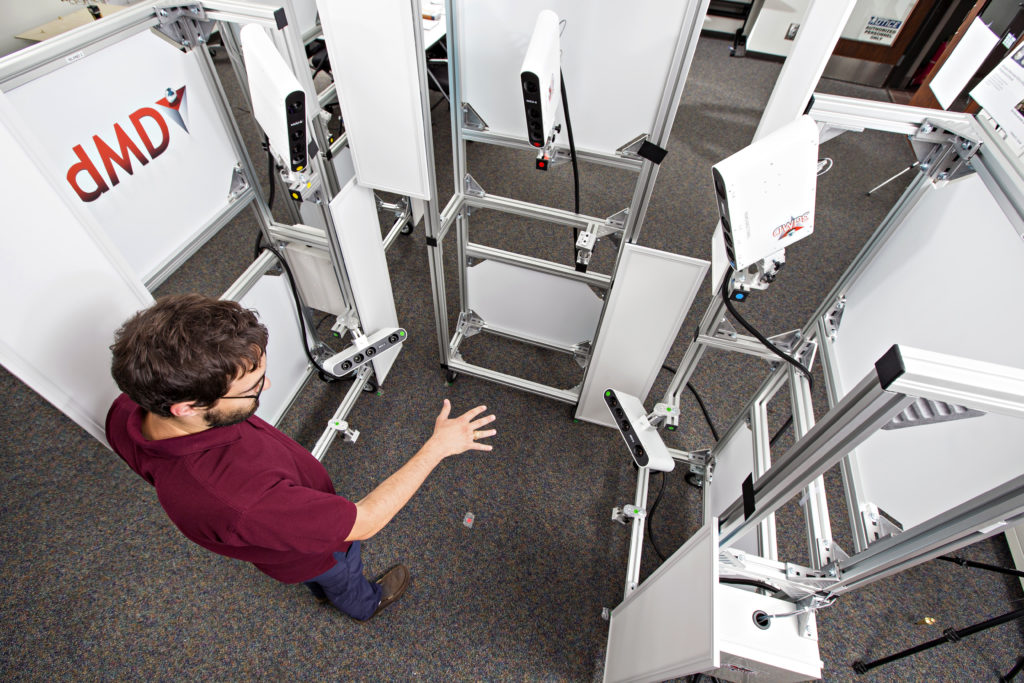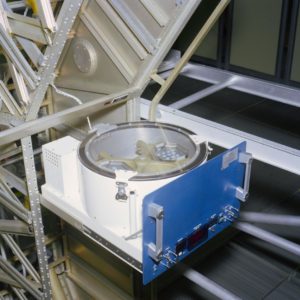Welcome!
Aerospace Human Systems Laboratory
Designing for Survival in Extreme Environments
The Aerospace Human Systems Laboratory (AHSL) aims to research and develop the capabilities to design and model space life support systems.
These life support systems will be anthropometrically engineered spacesuits for microgravity operations and fractional-g planetary surface exploration. These goals will be achieved through digital (static and dynamic) human modeling, variable-g fluid physics modeling, advanced materials selection, and rapid prototyping and manufacturing research. By using a systems approach, the AHSL aims to design space suits and environmental controls with the human at the center of the design considerations.
We are always looking for talented and collaborative undergraduate students, graduate students, visiting research scholars, and postdoctoral fellows so if you are interested in joining us you can find additional information in Opportunities.

 Photo Credit: NASA.
Photo Credit: NASA.







News
- Aerospace Engineering Student wins International Conference for Environmental Systems Poster Contest
- AHSL Graduate Students Win ISS R&D Conference Poster Competition
- Dunbar elected president of the Association of Space Explorers
- Dunbar and students attend International Conference on Environmental Systems
AHSL Reseach Focus Areas
Microgravity and Partial g Fluid Physics
Fluid systems play a large role in life support, environmental controls, and thermal control systems. AHSL seeks to analyze the effect of gravity level and centrifugal effects on the orifice nucleation, growth, detachment, and movement of nitrogen bubbles in water and silicone oil. Understanding bubble nucleation, growth, and detachment, specifically in microgravity and partial gravity, is a critical component of designing more efficient and lighter two-phase flow thermal management systems.
Extravehicular Activity (EVA) Spacesuit System Design

Apollo 17 EVA. Photo Credit: NASA.
AHSL is working on developing the next generation of spacesuits, including the Liquid Cooling Ventilation Garment and the Extravehicular Activity suit. A focus in the lab includes the anthropometric aspects of the suit, determining human dimensions that directly affect the fit and function of the space suit. Using tools such as 3D scanners, we are able to create custom spacesuits to individual wearers.
Space Systems Engineering

Astronaut Andrew Feustel Reenters the Space Station. Photo Credit: NASA.
Human Systems Integration looks at how systems are designed in relation to humans and their environment. It can include hardware, software, processes, human roles, and safety optimization. With regards to space, human systems integration is essential to the safety of an astronaut; everything from the International Space Station (ISS) to the Extra Vehicular Activity (EVA) suit is made to help astronauts safely survive in outer space. The Aerospace Human Systems Laboratory investigates a variety of space systems such as the EVA suit and the Liquid Cooling and Ventilation Garment (LCVG).

